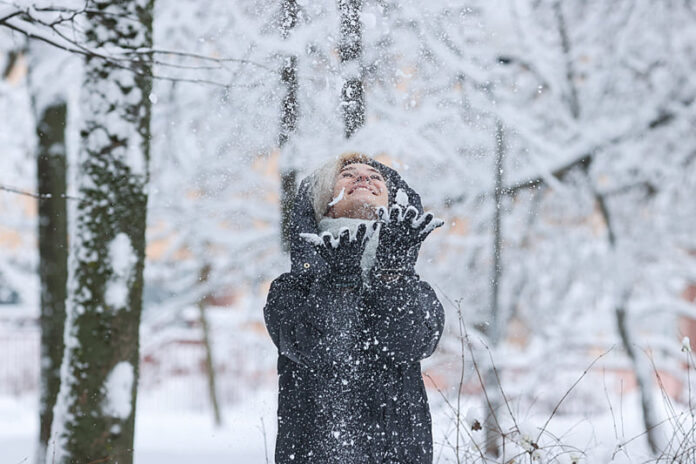Snow is not always romantic for everyone. It can be the cause of anxiety or depression for some people. Those who have a fear of snow are suffering from Chionophobia.
Chionophobia or snow phobia is the intense or extreme fear or dread of snow. In the snowy season, the sufferer avoids going outside.
People with Chionophobia are in great trouble throughout the winter, especially those living in northern areas where heavy snowfall occurs. They have to consolidate themselves inside the home.
In light snow, they feel like they are stuck in a snowstorm.
In this article, we will discuss the condition Chionophobic has to suffer. What are the symptoms and causes of it? How does a person cope with it?
What is Chionophobia?
Chionophobia is an intense and irrational fear of snow or blizzards. Chinophobia is a combination of two words Chiono means snow, and phobia means fear. Chionophobia belongs to phagophobia, the fear of frost or ice.
The fear of snow is so intense that people refuse to draw curtains when there is snow outside.
People with Chionophobia may experience the following symptoms: anxiety, panic attacks, sweating, trembling, shortness of breath, and avoidance of snowy or wintry environments.
The fear of snow may be triggered by past traumatic experiences, such as being trapped or lost in a blizzard, or it may be based on irrational beliefs about the dangers of snow.
Treatment for Chionophobia may involve therapy, medication, and exposure therapy. It helps the sufferer gradually confront and overcome their fear.
Symptoms of Snow Fear
Like other phobias, the symptoms of Chionophobia greatly affect the quality of life of a person. The person could show generalized phobia symptoms, such as panic attacks and anxiety while facing the thing he is phobic with.
Fearing snow brings with it a list of other symptoms through which you can identify the individual these signs are:
- Crying, screaming, tremors, and wanting to run away from the snow.
- Nausea or vomiting when staying in snow for long
- Shortness of breath and heart palpitation
- Panic attacks and severe anxiety
- Muscles tension, weird stomach upset
- Shakiness and sweating in the palm and feet
- Depression and anxiety when talking about snow
Causes of Chionophobia
There are several factors that may cause fear of snow. These factors include environment, genetics, heredity, and past history.
The most common cause is the past traumatic event related to snow. Someone who survived hard in the heavy snowy weather conditions may develop Chionophobia. If a child is injured due to ice or snow, they may develop a snow phobia that may persist lifelong. A person who has seen any fatal event due to freezing low temperatures may develop this phobia.
Media can also be the cause of snow phobia. For instance, if a person watches an event on the TV or media of a snowstorm in which many people got killed, he may develop a snow phobia.
The genetic constitution and the environmental factors collectively result in this disorder. Water phobia may sometimes lead to Chionophobia because ice is also a form of water.
Treatment of Fear of Snow
If your phobia is mild, you can cope with it by exposing yourself to it. How early you can cope with it depends on the intensity of the fear.
Learning more about the nature of phobias and how they develop can help you better understand your fear of snow. Understanding the physiological and psychological mechanisms that contribute to phobias can also help you control your anxiety.
Negative thoughts and beliefs about snow and winter weather can contribute to Chionophobia, so you can remove those negative thoughts by gradual exposure.
You can start with small exposures, such as looking at pictures of snow or watching the snowfall from inside, and gradually increase your exposure as you feel more comfortable.
If the fear is so intense that you can not handle it on your own, seek treatment.
The treatment of Chionophobia involves cognitive behavioral therapy (talk therapy), exposure therapy, or sometimes anti-anxiety medications are suggested.
In CBT, the therapist helps the client change their false perception of snow. CBT is the most effective form of treatment as it not only teaches the patient to cope with Chinophobia, but the person also learns other coping skills.
The bottom line
Chionophobia is an excessive or irrational fear of snow or blizzards. It can cause severe anxiety when exposed to snow and interfere with daily activities.
Treatment options for Chionophobia include therapy, medications, and self-help techniques, such as relaxation and gradual exposure.
Coping strategies can also be helpful in managing the fear of snow, such as seeking support, challenging negative thoughts, and educating oneself.
With proper treatment and support, it is possible to overcome Chionophobia and live a fulfilling life free from the limitations imposed by this fear.
Read Also
- Ketamine-Assisted Therapies: Impacts on Employee WellbeingWorkplace stress is common today. Many employees feel tired, anxious, or burned out. Regular therapy can help, but some people need more support. Ketamine-assisted therapy is showing good results for mental health. A ketamine-assisted therapist guides each session safely. This therapy can improve mood, focus, and energy. Learning more about it can help teams stay… Read more: Ketamine-Assisted Therapies: Impacts on Employee Wellbeing
- The Future of Men’s Health: Why Telehealth Is Here to StayTelehealth isn’t just a pandemic trend that faded into the background. For Australian men, it has become one of the most practical, time-saving, and stress-free ways to manage everyday health — and it’s shaping the future of how we access care. Platforms like DOCTO, an Australian online doctor and specialist telehealth service, are leading the… Read more: The Future of Men’s Health: Why Telehealth Is Here to Stay
- How to Build a Simple, Clean Skincare Routine ?You don’t need a complicated skincare routine. It doesn’t have to be something that requires twenty different products and confusing steps. Your routine works well with just a few high-quality clean ingredients. The beauty industry keeps pushing more products, but your skin actually needs less. You only need a simple approach to get better results… Read more: How to Build a Simple, Clean Skincare Routine ?
- How Preventive Dental Care Supports Overall HealthHave you ever wondered how a simple dental checkup could impact your entire body? Oral health is more than just a bright smile. Studies show that poor dental habits can contribute to serious health problems. Gum disease and tooth decay are linked to heart disease, diabetes, and infections. Yet, many people overlook preventive dental care.… Read more: How Preventive Dental Care Supports Overall Health
- Seeing Clearly in a High-Tech World: A Deep Dive into Advanced Vision Care ServicesProtecting your eyesight isn’t optional—it’s essential. Modern eye care has evolved far beyond basic exams, offering advanced diagnostics, personalized treatments, and surgical innovations that keep vision sharp for life. A leading example is Intermountain Eye Center, home to specialists like Dr Fishburn Boise, where patients receive comprehensive, high-level vision care designed to preserve long-term eye… Read more: Seeing Clearly in a High-Tech World: A Deep Dive into Advanced Vision Care Services
- Why the Keto Diet Works for Some People—and Fails Dramatically for Others: An Ayurvedic Breakdown for Modern HealthcareThe keto diet has dominated weight-loss culture for years. For some people, it produces rapid fat loss, stable energy, and improved mental clarity. For others—especially those who gain weight easily—it leads to burnout, digestive distress, rebound weight gain, high cholesterol, and a metabolism that feels slower than before. Healthcare often frames this as a discipline… Read more: Why the Keto Diet Works for Some People—and Fails Dramatically for Others: An Ayurvedic Breakdown for Modern Healthcare







